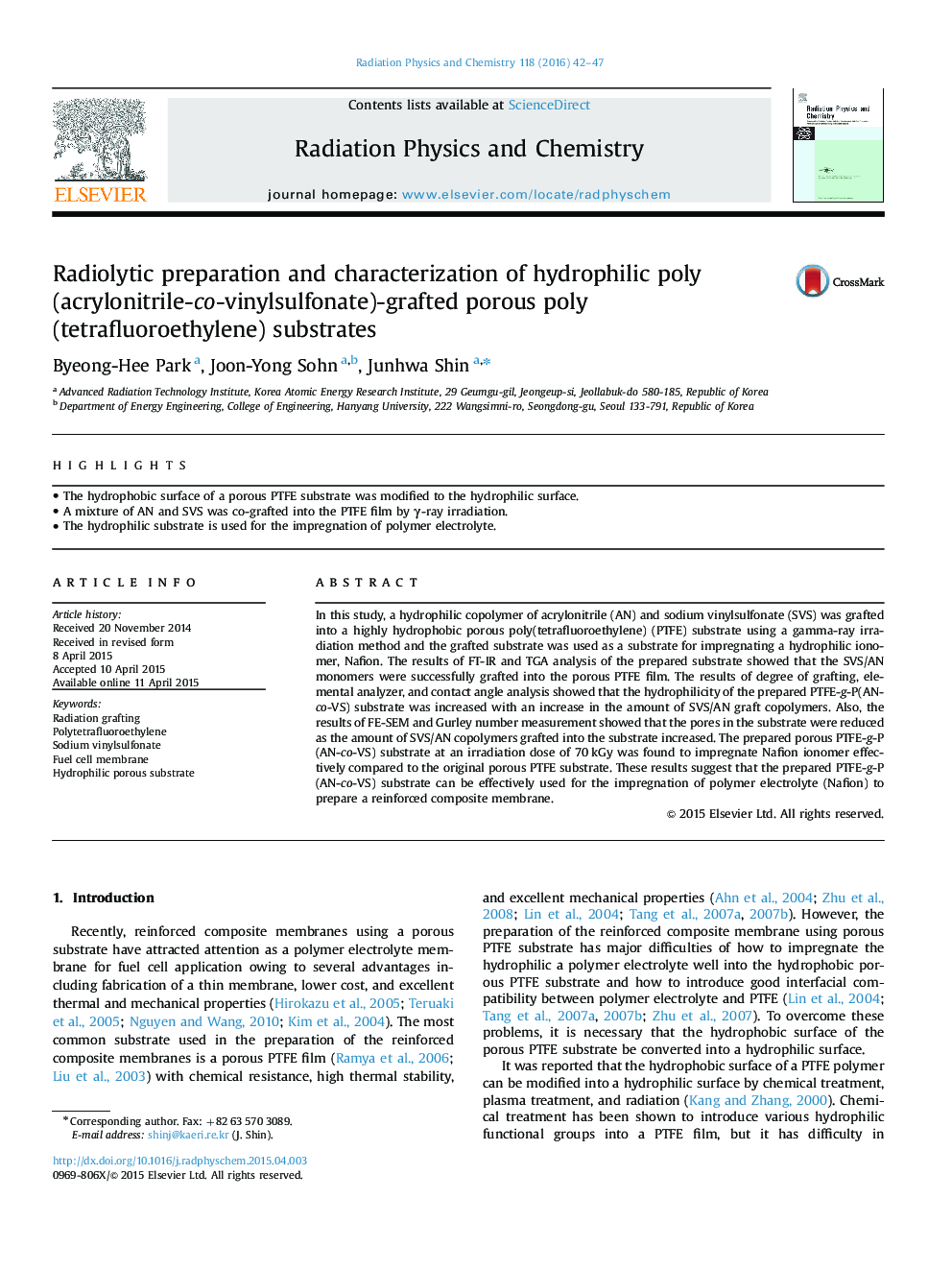| Article ID | Journal | Published Year | Pages | File Type |
|---|---|---|---|---|
| 1885801 | Radiation Physics and Chemistry | 2016 | 6 Pages |
•The hydrophobic surface of a porous PTFE substrate was modified to the hydrophilic surface.•A mixture of AN and SVS was co-grafted into the PTFE film by γ-ray irradiation.•The hydrophilic substrate is used for the impregnation of polymer electrolyte.
In this study, a hydrophilic copolymer of acrylonitrile (AN) and sodium vinylsulfonate (SVS) was grafted into a highly hydrophobic porous poly(tetrafluoroethylene) (PTFE) substrate using a gamma-ray irradiation method and the grafted substrate was used as a substrate for impregnating a hydrophilic ionomer, Nafion. The results of FT-IR and TGA analysis of the prepared substrate showed that the SVS/AN monomers were successfully grafted into the porous PTFE film. The results of degree of grafting, elemental analyzer, and contact angle analysis showed that the hydrophilicity of the prepared PTFE-g-P(AN-co-VS) substrate was increased with an increase in the amount of SVS/AN graft copolymers. Also, the results of FE-SEM and Gurley number measurement showed that the pores in the substrate were reduced as the amount of SVS/AN copolymers grafted into the substrate increased. The prepared porous PTFE-g-P(AN-co-VS) substrate at an irradiation dose of 70 kGy was found to impregnate Nafion ionomer effectively compared to the original porous PTFE substrate. These results suggest that the prepared PTFE-g-P(AN-co-VS) substrate can be effectively used for the impregnation of polymer electrolyte (Nafion) to prepare a reinforced composite membrane.
